Comments / Questions (58)
![]() Natalia wrote:
Natalia wrote:
Ho riprodotto questo modello con filati e taglie diverse, anche con maniche lunghe. Tutte le mie amiche soddisfatte MA io non lo sone perchè sempre il collo dietro risulta troppo basso/aperto rispetto al davanti. Sembra che sarebbe necessario avviare meno maglie per poi aumentare man mano per avere umo scollo che copra i collo dietro così da scaldare anche la cervicale. Come posso fare? se risolvo il problema allora sarebbe perfetto non solo bello. Un aiuto! Grazie
16.04.2025 - 20:40DROPS Design answered:
Buongiorno Natalia, per un'assistenza così personalizzata può rivolgersi al suo rivenditore DROPS di fiducia. Buon lavoro!
16.04.2025 - 22:41
![]() Phyllis wrote:
Phyllis wrote:
The pattern gives measurements for the lower edge, can you give an indication of bust measurements so that I know I'm knitting the right size for me. Thanks
09.01.2025 - 22:55DROPS Design answered:
Dear Phyllis, the body piece is actually worked straight, so the lower edge measurements should fit the chest measurements; the A-shape is obtained by working less rows on the neck, but the rest of the body is the same width. You can check the pattern photo and dropsfan gallery photo to see that the lower edge is not wider than the chest. Happy knitting!
12.01.2025 - 13:07
![]() Nancy St-Pierre wrote:
Nancy St-Pierre wrote:
J'ai tricoté les 3 cm de bordure devant. On me dit de continuer en rangs raccourcis *-* est-ce qu'il faut débuter avec 2 rgs complets suivis des rgs raccourcis ? Ou puis-je commencer par les rgs raccourcis suivis de 2 rgs tricotés au complet? Merci
19.11.2024 - 05:10DROPS Design answered:
Bonjour Mme St-Pierre, les rangs raccourcis se tricotent de *-* autrement dit, au 1er rang, tricotez toutes les mailles pendant 2 rangs, puis commencez à tricoter moins de mailles comme indiqué, répétez bien les rangs de *-*. Bon tricot!
19.11.2024 - 08:45
![]() JOUET-JUNGELSON wrote:
JOUET-JUNGELSON wrote:
Merci ! Merci ! Merci ! J'avance !!! Pour des modèles équivalents (taille cintrée, particulièrement adaptée pour les femmes 'rondes' contrairement aux formes 'sac') j'ai trouvé : 164-15, 157-13, 142-31 et 141-6. Jacqueline, la Parisienne.
21.06.2024 - 12:47
![]() JOUET-JUNGELSON wrote:
JOUET-JUNGELSON wrote:
Help ! help ! help ! -Je réalise la modèle 134-4. Quand je fais se rejoindre les deux parties du devant gauche, 57+ 72 m = 129m, je me retrouve avec une ouverture de 3cm de Ht pour passer le bras.! Pourquoi ? - Je ne comprends pas : "à partir du bas seulement". - Pourriez-vous m'adresser un croquis plus explicite ? - Peut-on trouver un modèle par son numéro Drop ? Je vous remercie d'avance. Cordialement? UNE TRICOTEUSE EN DETRESSE !!!
19.06.2024 - 18:33DROPS Design answered:
Bonjour Mme Jouet-Jungelson, en taille XL, votre devant gauche doit mesurer 30 cm le long du bas du gilet, vous tricotez ensuite la manche gauche (= 57 mailles) pendant 33 cm (longueur totale du bas la manche = votre ouverture pour la manche doit être ainsi de 33 cm avant de reprendre les 72 mailles en attente pour tricoter le dos. Bon tricot!
20.06.2024 - 08:08
![]() Bea Van Beusichem wrote:
Bea Van Beusichem wrote:
Hoeveel steken moet je breien bij de verkorte toeren in de mouw?
23.03.2024 - 15:34DROPS Design answered:
Dag Bea,
Dit kan per maat verschillend zijn, maar je keert het werk op hetzelfde punt als bij de panden. Dus even goed kijken en eventueel tellen waar je moet keren voor de verkorte toeren.
27.03.2024 - 14:06
![]() Birgit Ziller wrote:
Birgit Ziller wrote:
Wieviele Maschen haben die verkürzten Reihen an den Ärmeln???
13.03.2024 - 23:06DROPS Design answered:
Liebe Frau Zoller, die verkürzten Reihen werden wie zuvor aber über die 51-53-55-57-60-62 Maschen auf der Nadel gestrickt, wenden Sie genauso wie zuvor, dh an die gleichen Stellen wie zuvor. Viel Spaß beim Stricken!
02.04.2024 - 07:49
![]() Marianne Svensson wrote:
Marianne Svensson wrote:
Hej! Jag har börjat sticka på denna väst som ska stickas på tvären framifrån. Enligt mönstret nerifrån och upp mot halsen. Börjat att sticka vändningar. Jag får då en vändning 5 cm från midjan uppåt. Ska det vara så ? I mitt tänkande bör väl västens vändningar bli en bit ner från halskanten. och löpa över framstycke, ärm, bakstycke och ärm. Kan det vara så att jag stickar fel mellan* och * på vändningar. Tacksam för svar. Mvh Marianne Svensson
07.12.2023 - 14:45DROPS Design answered:
Hei Marianne. I f.eks str. S legger man opp 115 masker og når man starter å strikke vendinger, starter man nederst og strikker opp mot halsen. Man strikker først 103 masker, så vender man. Så 1.vendig kommer ganske nær halsen. Snu og strikk ned til kanten igjen, snu og strikk 89 masker opp mot halsen, snu og strikk ned til kanten, snu og strikk 71 masker, snu og strikk ned til kanten igjen. Du har nå strikket 1 rapport. Strikk denne rappoten til arbeidet måler 23 cm, mål nederst. mvh DROPS Design
11.12.2023 - 08:17
![]() Anne Emery wrote:
Anne Emery wrote:
J'ai fini de tricoter la manche gauche et je ne comprends pas très bien comment reprendre les mailles mises en attentes. Cela fait un espèce de trou au niveau du dessous du bras ?
04.09.2022 - 19:22DROPS Design answered:
Bonjour Mme Emery, au dernier rang rang de la manche gauche, vous avez tricoté toutes les mailles sur l'envers, tricotez maintenant les mailles du dos mises en attente (sur l'envers également, vous avez maintenant joint les 2 pièces et pouvez maintenant tricoter le dos. L'ouverture de la manche en haut correspond au passage du bras et sur le côté, vous avez tricoté 1 cm pour le côté (dessous du bras/de la manche). Bon tricot!
05.09.2022 - 09:28
![]() Gilardi Claudette wrote:
Gilardi Claudette wrote:
Je ne comprends pas l'explication des manches.que veut dire "avec les rangs raccourcis comme avant,aux mêmes endroits" Merci
31.01.2022 - 09:02DROPS Design answered:
Bonjour Mme Gilardi, vous avez auparavant tricoté des rangs raccourcis sur toute la longueur, lorsque vous tricotez les manches, vous allez tourner aux mêmes endroit qu'avant (moins de fois car moins de marqueurs), et continuer ainsi les rangs raccourcis comme avant. Bon tricot!
31.01.2022 - 10:23
Eden#edencardigan |
||||
|
|
||||
Knitted DROPS vest in garter st worked sideways with short rows in ”Fabel”. Size: S - XXXL.
DROPS 134-4 |
||||
|
KNITTING TIP: Every time piece is turned in the middle of piece, slip first st as if to K, tighten yarn and knit back. This is done to avoid holes when working short rows. SHORT ROWS: Work short rows in the middle of the piece to give the garment a slight A shape. Beg from bottom edge and work up to neck like this: * Work all sts, turn and work back. Work 103-108-112-115-119-122 sts, turn and work back. READ KNITTING TIP! Work 89-94-97-99-103-105 sts, turn and work back. Work 71-75-77-79-81-83 sts, turn and work back *. Repeat from *-*, i.e. 1 repetition = 2 rows at the top and 8 rows at the bottom. MEASURING TIP: Measure when piece is flat, it is important not to stretch the piece when measuring. -------------------------------------------------------- VEST: Worked across back and forth on needle. Beg mid front on left front piece and finish mid front on right front piece. NOTE: The picture of the vest has been reversed. LEFT FRONT PIECE: The whole piece is worked in garter st, i.e. K all rows. Loosely cast on 115-120-125-129-134-138 sts on needle size 3.5 mm / US 4 with ocean view Fabel. 1st row is worked from RS (= from bottom edge and up to neck). Work 3 cm / 1⅛" over all sts (= band), finish after 1 row from WS. REMEMBER THE GAUGE! Continue with SHORT ROWS - see explanation above! Continue like this until piece measures approx. 23-25-27-30-33-35 cm / 9"-9¾"-10⅝"-11¾"-13"-13¾" from cast on edge (measured at the bottom on the widest) – READ MEASURING TIP! Then work side piece as follows: Work 1 cm / ⅜" back and forth over only the 64-67-70-72-74-76 sts from bottom edge. Insert 1 marker (= middle of the side). Work 1 cm / ⅜" back and forth over the same sts, and slip them on 1 stitch holder (finish after 1 row from RS, sts are to be used on back piece later). Then work sleeve. LEFT SLEEVE: = 51-53-55-57-60-62 sts on needle. Work back and forth with short rows on the same places as before until piece measures approx. 30-31-32-33-34-35 cm / 11¾"-12¼"-12½"-13"-13⅜"-13¾" (at the bottom on the widest), finish after 1 row from WS. BACK PIECE: Work the 64-67-70-72-74-76 sts from stitch holder back on needle (from WS) = 115-120-125-129-134-138 sts. Continue with short rows as before. When piece measures approx. 21-23-25-28-31-33 cm from marker in the side (measured at the bottom on the widest), insert another marker (= mid back). Continue with short rows until piece measures approx. 20-22-24-27-30-32 cm / 8"-8¾"-9½"-10⅝"-11¾"-12½" from marker mid back (measured at the bottom on the widest). Now work side piece as follows: Work 1 cm / ⅜" back and forth over only the 64-67-70-72-74-76 sts from bottom edge. Insert another new marker (= middle of the side). Work 1 cm / ⅜" back and forth over the same sts (finish after 1 row from RS), then slip them on 1 stitch holder. Work right sleeve. RIGHT SLEEVE: Work as left sleeve. RIGHT FRONT PIECE: Work the 64-67-70-72-74-76 sts from stitch holder back on needle (from WS) = 115-120-125-129-134-138 sts. Continue with short rows as on back piece. When same no of rows have been worked on right front piece as on left front piece (minus band = 3 cm / 1⅛"), work band as follows: Work 1½ cm / ½" back and forth over all sts. On next row from RS, bind off for button holes as follows (= from bottom edge): Work 12 sts for all sizes, bind off the next 2 sts, * work 12-13-14-14-15-15 sts, bind off the next 2 sts *, repeat from *-* a total of 4 times, work the rest of row. On next row cast on 2 new sts over the bound off sts. Work over all sts until band measures a total of 3 cm / 1⅛". Loosely bind off. ASSEMBLY: Crochet with 2 strands brown on hook size 4 mm / G/6 as follows: Beg at the bottom of right front piece with 1 sc, * ch 2, skip approx. 1 cm / ⅜" and fasten with 1 sc *, repeat from *-* up along right front piece, along the collar, back of neck and down along left front piece, cut the yarn and fasten. Sew on buttons. |
||||
Diagram explanations |
||||
|
||||
 |
||||
Have you finished this pattern?Tag your pictures with #dropspattern #edencardigan or submit them to the #dropsfan gallery. Do you need help with this pattern?You'll find 6 tutorial videos, a Comments/Questions area and more by visiting the pattern on garnstudio.com. © 1982-2025 DROPS Design A/S. We reserve all rights. This document, including all its sub-sections, has copyrights. Read more about what you can do with our patterns at the bottom of each pattern on our site. |
||||











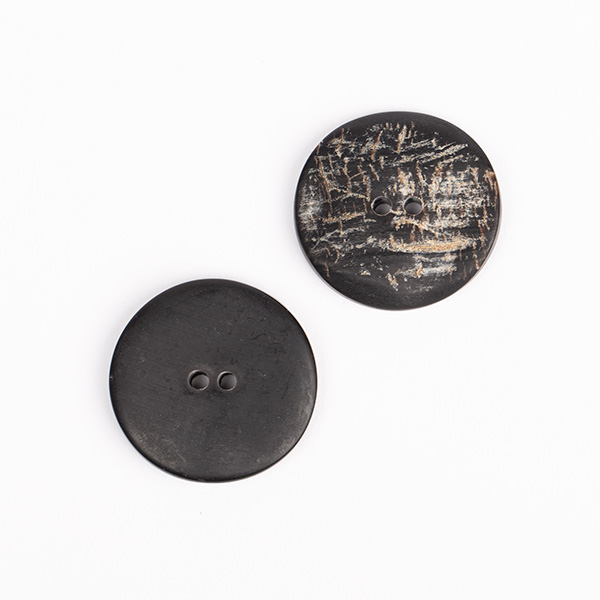

























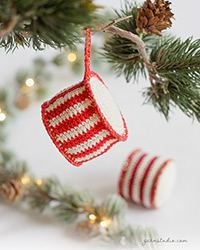
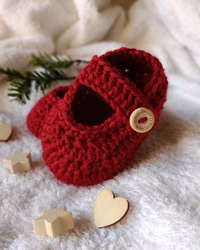
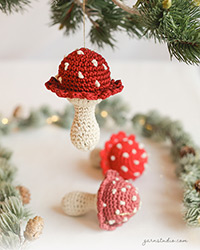
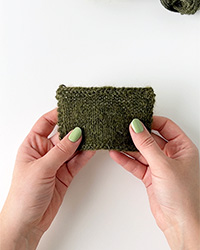

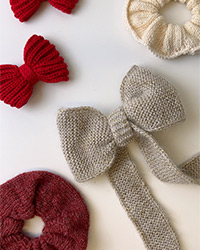
Post a comment to pattern DROPS 134-4
We would love to hear what you have to say about this pattern!
If you want to leave a question, please make sure you select the correct category in the form below, to speed up the answering process. Required fields are marked *.